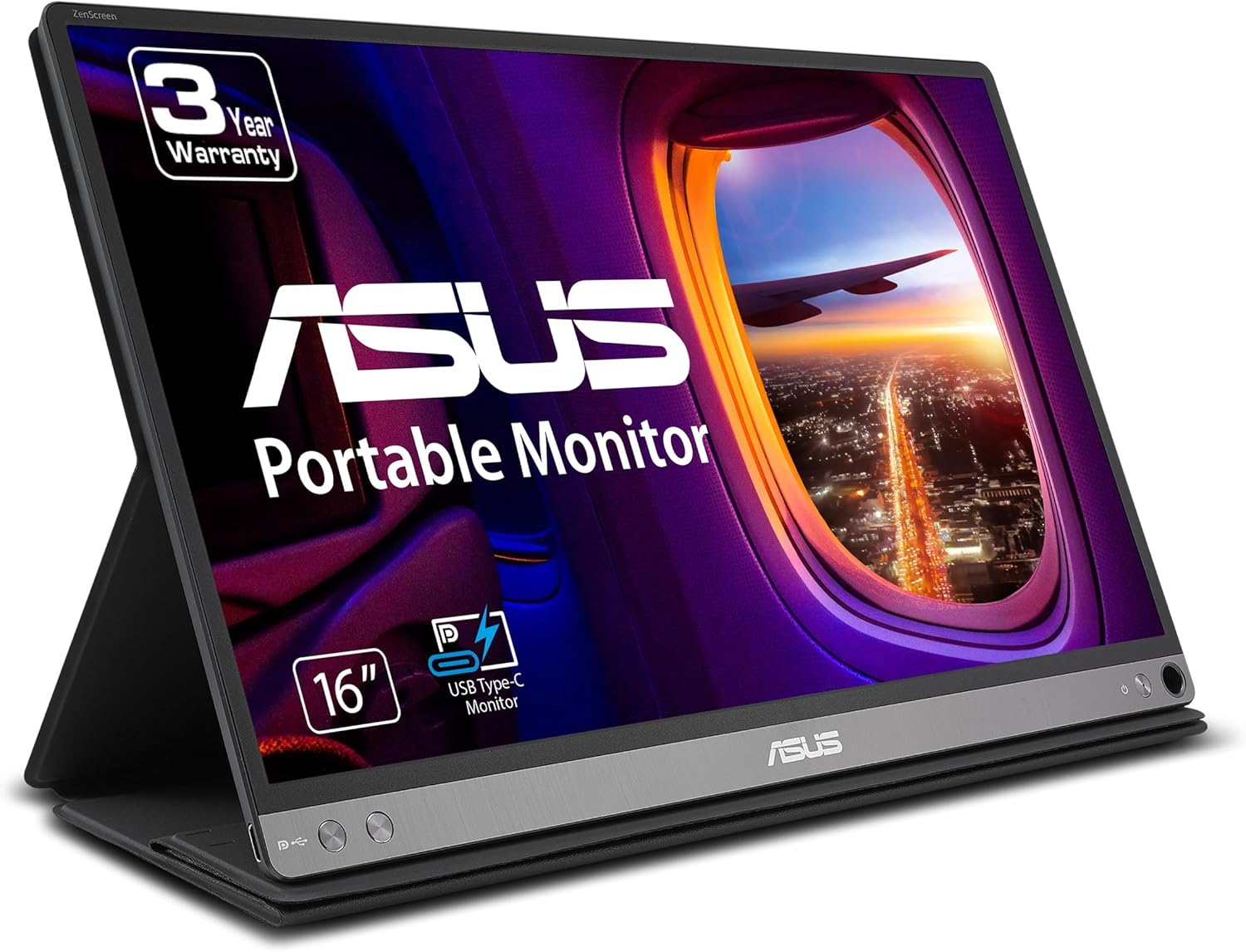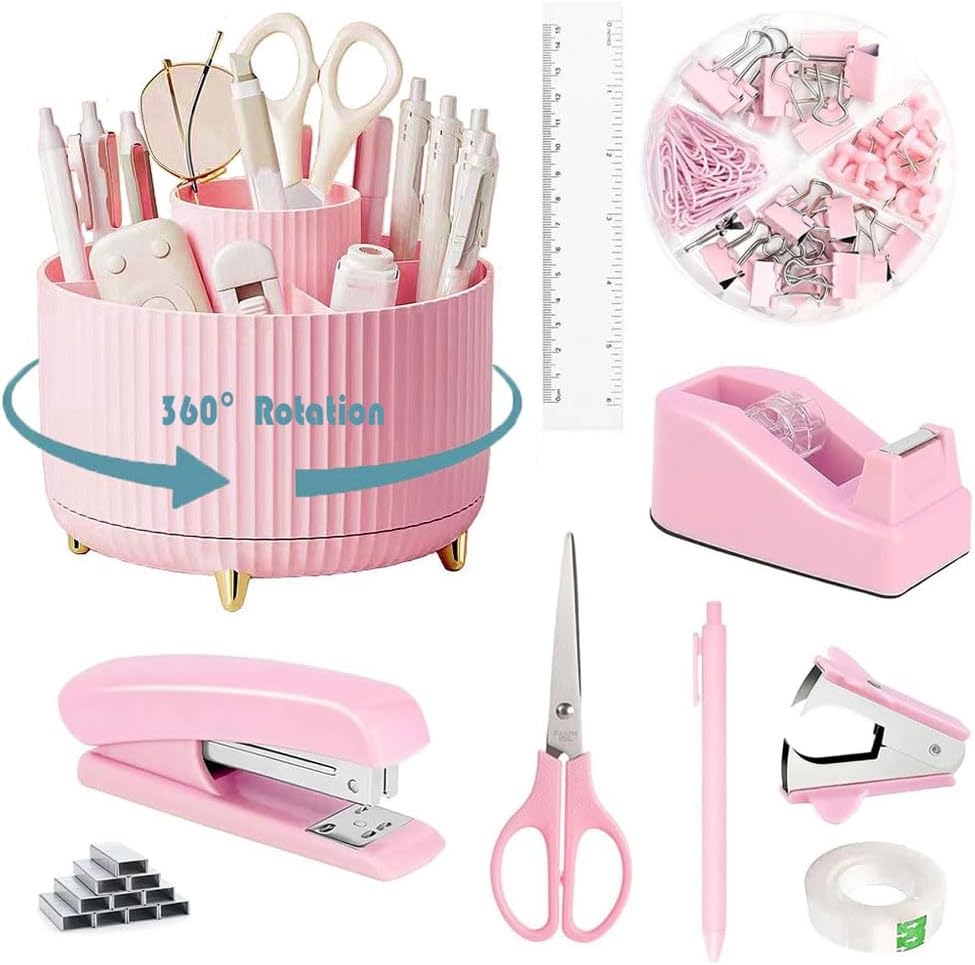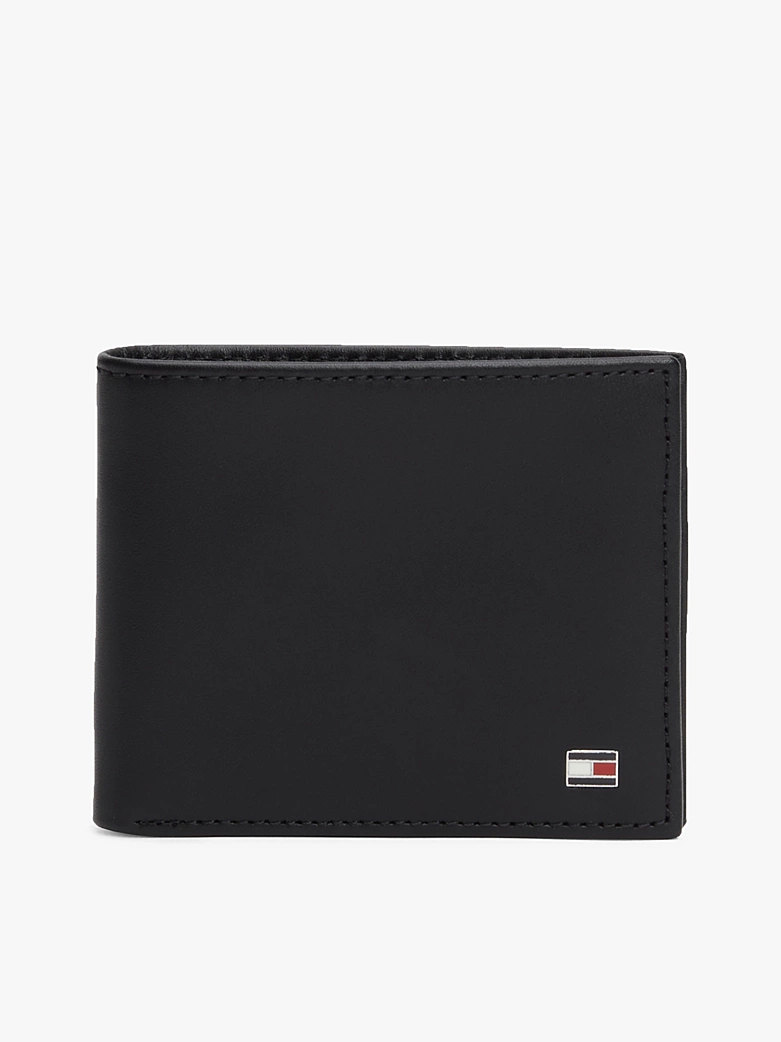Have you ever wished you had a second screen while working on your laptop outside the office? Portable monitors are the answer. These slim, lightweight displays can travel with you, giving you a dual-screen setup anywhere – whether you’re at a coffee shop, on a plane, or in a hotel room. For remote workers, frequent business travelers, or students, a portable monitor can be a game-changer for productivity. Instead of juggling windows on one small laptop display, you can spread out your work across two screens. In fact, research shows that using multiple monitors can increase productivity by an average of 42%. That’s a compelling reason to consider a portable monitor if you often find yourself working on the go.
In this article, we’ll explore the benefits of portable monitors and what features to look for. We’ll also take a close look at the ASUS ZenScreen MB16AC – a popular portable monitor model known for its convenience and performance – to see why it’s a fantastic choice for enhancing your productivity anywhere.

Why a Portable Monitor Can Boost Your Productivity
Working on a single small screen can feel limiting, especially if you’re used to a dual-monitor setup at your desk. A portable monitor changes that by providing extra screen real estate on the move. With a second screen, you can have your email or reference documents open on one display while working on a report or coding on the other. This kind of multitasking is much smoother with two screens, as you don’t constantly alt-tab or switch between windows.
Portable monitors are designed to be lightweight and travel-friendly. They typically weigh just a couple of pounds or less and are slim enough to slip into a laptop bag. Despite their small footprint, many offer the same screen size as a standard laptop (around 15.6 inches), effectively doubling your viewing area when paired with your notebook. Because they draw power from your laptop via a single cable, you don’t need a separate power outlet (in most cases) to use them.
The productivity benefits are clear: you can set up a mini dual-screen workstation anywhere in minutes. If you’re a digital nomad bouncing between co-working spaces, a consultant traveling to client sites, or even just working from the library or kitchen table, a portable monitor gives you desktop-like efficiency. It can be a boon for tasks like comparing documents side by side, keeping chat or video meetings on one screen while working on the other, or having your coding environment on one display and the output or documentation on the second.
Additionally, using a portable monitor can improve overall ergonomics – you can place the second screen at eye level to reduce neck strain. Many portable monitors come with a smart cover that doubles as a stand, so you can prop the screen up in either landscape or portrait orientation depending on your needs.
Key Features to Look for in a Portable Monitor
Not all portable monitors are created equal, so here are some important features and factors to consider when choosing one:
Size and Resolution
Most portable monitors range from 14 to 17 inches. 15.6 inches (like our featured ASUS ZenScreen) is a common sweet spot, matching a typical laptop screen. You’ll want at least Full HD (1920×1080) resolution at that size for crisp text and images. Thankfully, many models offer 1080p, which is sufficient for work, web browsing, and media. There are also higher resolution options or smaller 14-inch models if you prioritize compactness.
Weight and Thickness
Since the whole point is mobility, a lighter and thinner monitor is better. Some of the best models weigh under 2 pounds. For example, the ASUS ZenScreen MB16AC weighs just about 1.7 pounds (0.78 kg) and is only 8mm (0.3 inches) thick. That means it slips easily into a backpack and won’t strain your shoulder. If you travel often, shaving off every extra ounce counts.
Connectivity (Single-Cable Solution)
The easiest portable monitors use a single cable for both power and video. Many newer models use USB-C connections that carry video signal and power in one. The ZenScreen MB16AC, for instance, only needs one USB connection to work – it supports USB-C natively and even USB-A via an adapter and driver, for broad compatibility. This single-cable setup is super convenient: you plug in one cord to your laptop, and your second screen lights up with no extra power brick needed. Always check what ports your laptop has (USB-C is ideal). Some portable monitors also support HDMI, but then you’d typically need to plug in a separate power cable, which is less convenient on the go.
Battery vs. Bus-Powered
A few portable monitors come with an internal battery. This can be useful if you want to connect to something like a smartphone or a camera that can’t power the monitor. However, most popular models (including the ASUS ZenScreen series) are bus-powered, meaning they draw power from the device they’re connected to. Bus-powered monitors are simpler and lighter (no battery bulk). Just be mindful that they will consume some of your laptop’s battery if you’re not plugged into an outlet.
Display Quality and Brightness
Look for an IPS panel for good color and viewing angles. Portable screens generally won’t be as bright as high-end desktop monitors (to save power), but you’ll want something in the 200+ nits range at least. The ZenScreen MB16AC, for example, has a brightness around 220 cd/m², similar to many laptops, which is fine for indoor use. Also consider if the monitor has features like a blue light filter or flicker-free backlight to reduce eye strain during long work sessions.
Orientation and Stand
Many portable monitors can auto-detect orientation and switch between landscape and portrait mode. Portrait mode is great for coding or reading long documents. Check if the monitor comes with a cover that doubles as a stand (common with models like the ZenScreen) or if it has a built-in kickstand. A stable stand is essential so that your screen doesn’t wobble when you’re typing. Some monitors even have a standard tripod mount or a pen hole for support (the ZenScreen lets you use a pen as a prop), giving you options for how to set it up.
(Extra Features: Some models include useful extras like low blue light modes or built-in speakers. Decide what matters for you – e.g., you might not need built-in audio if you use your laptop’s speakers or headphones.)

Featured Product: ASUS ZenScreen MB16AC Portable Monitor
One of the standout options in this category is the ASUS ZenScreen MB16AC. Let’s dive into why this model is so well-regarded for portable productivity.
Ultra-Portability
As noted, the ZenScreen MB16AC is extremely light and thin – about 0.78 kg in weight and only 8mm thick. In fact, ASUS touts it as the world’s lightest 15.6-inch companion display. When you’re carrying it around, it hardly adds any burden to your bag. Its sleek profile means you can slide it alongside your laptop without a fuss. The monitor comes with a smart foldable cover that protects the screen when not in use and transforms into a stand when you need to prop it up. This design means you don’t have to carry a separate bulky stand; the cover does the job, allowing for both landscape and portrait use.
Single-Cable Convenience
The ZenScreen MB16AC uses ASUS’s hybrid signal solution, which basically means it works with a single USB cable for video and power with almost any modern laptop. If your laptop has a USB-C port, it’s plug-and-play. If you only have USB-A, no worries – ASUS provides a USB-C to USB-A adapter and a driver to ensure compatibility. As ASUS describes, it “only requires a single USB connection for both power and video,” supporting both USB-C and USB-A connections. In practical terms, setup is incredibly simple: one cord from the monitor to your laptop and you’re done. No power cord, no HDMI cable, nothing else. This simplicity encourages you to actually use the monitor wherever you are, since it’s not a hassle to set up.

Productivity Boost
When using the ZenScreen, you effectively have a dual-screen workspace on the go. Users who often work from various locations have found that it “can boost your productivity” during travel or hotel stays. Whether you’re crunching numbers in spreadsheets, editing documents, or attending video meetings, having that extra screen means less switching between windows. The 15.6-inch Full HD display provides plenty of room for most tasks. And because it’s an IPS panel, the colors and viewing angles are solid – you can even share the screen with a colleague or client for a quick presentation. It’s not meant to replace a professional color-calibrated monitor, of course, but for everyday work it’s excellent.
Ease of Use and Extras
Setting up the ZenScreen MB16AC is straightforward. It draws up to 8W of power over USB, which most laptops can supply easily. The monitor’s menu (accessible via side buttons) allows you to adjust brightness, contrast, and blue light filter settings. When you rotate the monitor 90 degrees to vertical, the ASUS software can automatically pivot the display into portrait mode – very handy for reading or coding. Also, the Eye Care features (flicker-free tech and blue light reduction) make it comfortable to use for extended periods without as much eye fatigue. This is an important consideration, since when you’re on the road you might not always have perfect lighting conditions; a screen that’s easy on the eyes is a big plus.
Build Quality
Despite its lightness, the ZenScreen feels well built and sturdy enough for travel. The included smart cover protects the screen in your bag. There’s even a little pen that ASUS includes; you can insert it into a hole in the bottom corner of the monitor to serve as a makeshift prop stand (in case you don’t use the cover). It’s a clever addition that shows the product is designed with real-world use in mind. The overall aesthetic of the monitor is modern and minimalist – it looks like a slim tablet. With slim bezels, it also matches nicely next to most modern laptops without a big border distracting you.
In sum, the ASUS ZenScreen MB16AC checks all the boxes: it’s extremely portable, easy to connect, and big enough to be genuinely useful. It exemplifies how a good portable monitor can let you work efficiently from anywhere, without tying you to a traditional office desk.

Conclusion
Portable monitors have opened up new possibilities for how and where we can work. By carrying a lightweight second screen, you’re no longer constrained by a single display when you’re away from your desk. Whether you’re a professional trying to maximize productivity on business trips or a student wanting more screen space for research and assignments, a portable monitor can make a significant difference in your workflow. It’s about bringing the comfort and efficiency of a dual-monitor setup wherever you go.
When choosing a portable monitor, consider your needs – screen size, compatibility, and portability. The ASUS ZenScreen MB16AC is a versatile option that ticks those boxes, offering an excellent balance of portability and performance. There are plenty of other models available, but the ZenScreen’s combination of slim design, single-cable simplicity, and reliable functionality makes it a top pick for many. With a device like this, you can be just as productive on the road as you are in the office. Once you experience the convenience of a dual-screen setup anywhere, it’s hard to go back. Truly a productivity booster on the go.
FAQ
-
What devices can I connect to a portable monitor?
Most portable monitors support laptops, tablets, and smartphones via USB-C (for both power and video). Some models also offer HDMI input or a USB-A adapter for wider compatibility. Always check that your host device supports DisplayPort Alternate Mode over USB-C if you plan to use a single-cable setup. -
Do I need an external power source?
If your monitor is bus-powered (like the ASUS ZenScreen MB16AC), it draws power from your laptop via USB-C or USB-A, so no separate power outlet is required. Monitors with internal batteries can run untethered but are typically heavier. -
Will a portable monitor drain my laptop battery quickly?
Bus-powered monitors typically consume around 5–8 W. On a full laptop battery, expect a reduction in runtime of about 10–20 %. If you need longer unplugged sessions, consider carrying a power bank or choosing a monitor with its own battery. -
How does screen orientation work?
Many portable monitors include automatic rotation detection, switching between landscape and portrait modes when you flip the display. A smart cover or kickstand lets you prop the screen in either orientation for coding, document review, or web browsing. -
What resolution should I look for?
For a 15.6-inch portable monitor, Full HD (1920 × 1080) is the sweet spot—sharp enough for text and detailed images without overtaxing power. Higher-resolution options exist (e.g., 2K or 4K), but they can be pricier and draw more power. -
Is color accuracy important for on-the-go work?
If your focus is general productivity—spreadsheets, documents, web browsing—an IPS panel with standard sRGB coverage is sufficient. For photo or video editing, look for factory-calibrated displays with wider color gamuts, though these may be heavier and costlier. -
How do I protect and carry my portable monitor?
Most models come with a foldable smart cover that doubles as a stand and shields the screen in your bag. For extra protection, use a padded sleeve inside your backpack to prevent scratches and impacts. -
Can I use a portable monitor outdoors?
Yes—provided you can control glare and brightness. Look for at least 200 nits of brightness and consider an anti-glare matte finish. Shade or indirect light will yield the best visibility for an outdoor setup.











